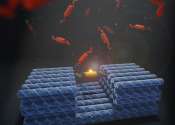Study describes new method for probing the bewildering diversity of the microbiome
In recent years, researchers have begun to explore the vast assemblage of microbes on and within the human body. These include protists, archaea, fungi, viruses and vast numbers of bacteria living in symbiotic ecosystems.









